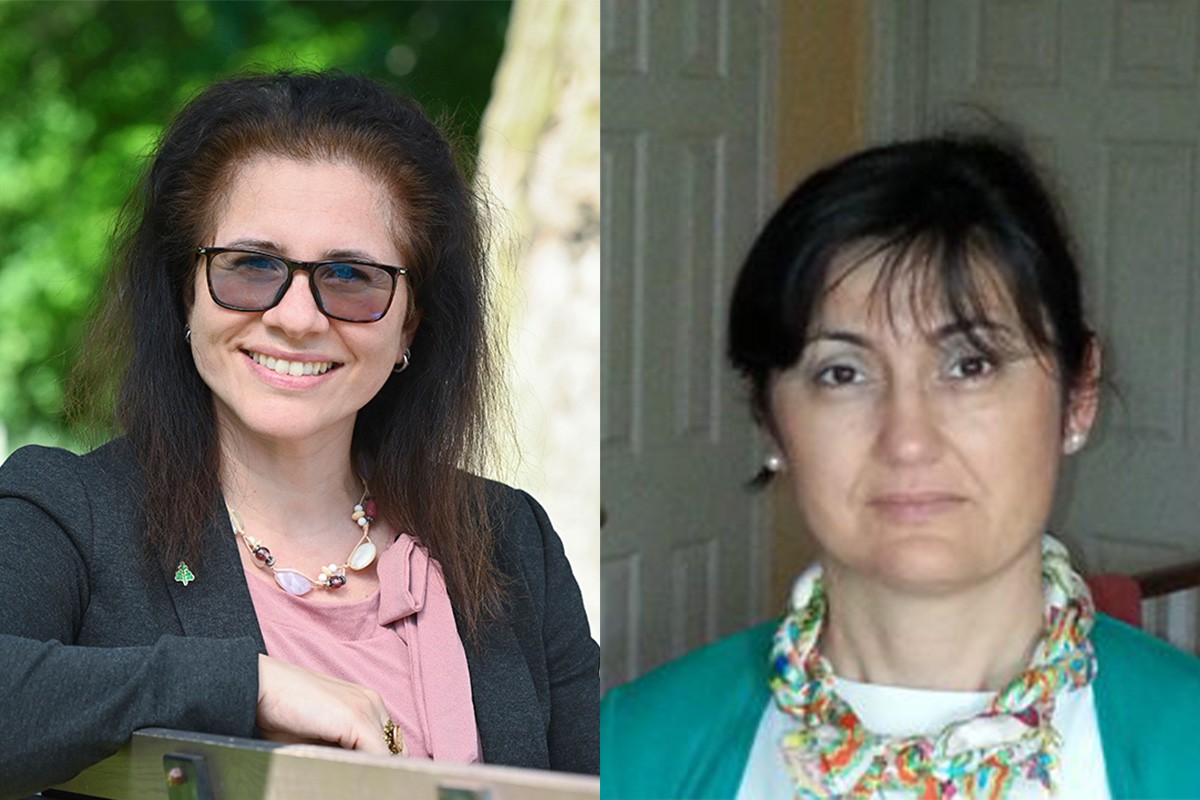Behind the Guide: A Conversation with the Authors of Tree Canada’s Urban Forestry Guide
Growing Green Cities: A Practical Guide to Urban Forestry in Canada is the third edition of Tree Canada’s urban forestry resource. It’s designed to support municipalities, arborists, educators, and community leaders in growing greener, healthier, and more equitable urban spaces.
We interviewed the authors, Dr. Adrina C. Bardekjian and Dr. Danijela Puric-Mladenovic, to learn how the guide came to be and how they hope it will shape the future of urban forestry in Canada.

Dr. Adrina C. Bardekjian (left) and Dr. Danijela Puric-Mladenovic (right). Authors of Growing Green Cities: A Practical Guide to Urban Forestry in Canada.
What was it like pulling together such a dense and research-heavy resource?
Adrina: Like any true passion project, the process was both demanding and deeply rewarding. Urban forestry is a field I care about deeply, so immersing myself in the research and refinement of this guide was a pleasure. I was fortunate to work alongside my co-author and friend, Danijela, a group of talented and committed graduate students whose contributions were critical to ensuring the guide’s accuracy, relevance, and usability.
Danijela: With every piece of literature we examined and every initiative we investigated, we uncovered something new and compelling. It became evident just how much Canadian urban forestry has advanced and matured over the years. This process also highlighted the value of collaboration and what can be achieved through collective effort, as it was inspiring and a great pleasure working with Adrina and Tree Canada on this project.
The guide covers a wide range of topics. How did you decide what to include?
Adrina: Urban forestry has become increasingly complex over the past 20 years. In deciding what to include, we sought to reflect this evolution by introducing new chapters, incorporating recent research, and expanding the depth of content in existing sections. The goal was to capture both the foundations of the discipline and its emerging trends, ensuring the guide remains a relevant and robust resource for practitioners and researchers alike.
Danijela: We began by following the structure and content of the original Compendium, which provided a solid base. From there, we integrated emerging topics in urban forestry that reflect current developments, challenges, and innovations within the field. Our aim was to maintain continuity while also adapting to the evolving landscape of urban forestry in Canada.
"It became evident just how much Canadian urban forestry has advanced and matured over the years. This process also highlighted the value of collaboration and what can be achieved through collective effort." — Dr. Danijela Puric-Mladenovic
How do you hope this guide will be used?
Adrina: My hope is that the guide serves as a foundational resource for anyone seeking a deeper understanding of urban forestry — whether they’re seasoned professionals or new to the field. While it’s tailored for practitioners, it also functions effectively as an “Urban Forestry 101” text. At the University of Toronto, both Danijela and I will be using it with our students, and we hope it will be adopted by other academic institutions as well. It’s designed to support both learning and practical application.
Danijela: We hope this guide serves as a comprehensive overview of urban forestry in Canada—one that can be expanded over time. It is envisioned and designed to be a one-stop resource on Canadian urban forestry, offering value as a professional resource, a source of ideas and insights for professionals, a practical reference for staff training, but also an educational tool. Additionally, we envision it as a way to represent Canadian urban forestry on the international stage, showcasing its richness and diversity to a global audience.
What role does Tree Canada play in shaping the urban forestry field in Canada, and how does this guide contribute to that?
Adrina: Tree Canada plays a pivotal role in convening, connecting, and supporting the urban forestry community across the country — particularly through our Canadian Urban Forest Network (CUFN) program. As a national organization, it brings a unique perspective to pan-Canadian research, practice, and policy. This guide complements a broader suite of resources developed by Tree Canada and supports its mission of knowledge exchange and capacity building. By creating shared understanding across the sector, we open the door to deeper collaboration and innovation — whether in practice or research.
Danijela: Our vision of creating a comprehensive and publicly accessible resource was made possible thanks to the support of Tree Canada. Tree Canada, as the oldest national organization dedicated to urban forestry in Canada, has played a pivotal role in the development of urban forestry. Their support was essential for both the original Compendium and the creation of this guide. This publication continues Tree Canada legacy by bringing together knowledge, expertise, and perspectives from across the country.
"My hope is that the guide serves as a foundational resource for anyone seeking a deeper understanding of urban forestry — whether they're seasoned professionals or new to the field." — Dr. Adrina C. Bardekjian
What would you say to someone interested in reading the guide for the first time?
Adrina: Think of this guide as a thoughtful introduction to the state of urban forestry in Canada. Take the time to explore it with curiosity — dig deeper, reflect critically, listen carefully, and act intentionally. And most importantly, ask questions, build connections, and keep learning from each other. Urban forestry is, after all, a collaborative and ever-evolving field.
Danijela: As with any authored work, this guide reflects authors perspective. However, it also represents what we heard a collaborative effort among many contributors. Whether you are just beginning to explore urban forestry or have been working in the field for years, we believe this guide offers valuable insights and a strong foundation for further learning and action; and it is free.
Read Growing Green Cities: A Practical Guide to Urban Forestry and explore how you can help shape the future of urban forestry in your community.
Back to all articles